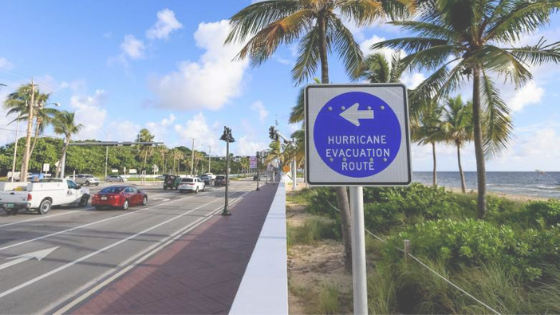Every year this country is hit with dozens of hurricanes, tornadoes, flooding, and more. September is National Preparedness Month. So to help you prepare, let’s talk about several things you should know and do before the next storm hits.
Here are the 4 things you should know before the next storm hits:
- Evacuation routes – Be familiar with these routes before a storm hits so you know where to go.
- Where to find shelter – It’s best to have a plan that the whole family knows about beforehand. Basements, the bottom floor of a building or under a stairwell are all good places to wait out a storm. If you have to be evacuated, where do you plan to stay? Don’t forget to make a plan that includes your pets! For public health reasons, many shelters cannot accept pets, unless they are service animals. If you know your route ahead of time, you can find pet friendly hotels along your evacuation route.
- The elevation level of your property – You may not be able to prevent flood damage, but you could at least take measures to avoid losing anything irreplaceable by putting these items on higher ground.
- A safe place for your car – If you’re unable to take your car with you when you evacuate, park it indoors or on high ground away from potential sources of damage such as falling debris. Sealing the windows and doors with a tarp and waterproof tape would also be ideal.
Not only should you know your evacuation route and where to find shelter, here are the 4 things you should do before the next storm hits:
- Keep your car fueled up – Don’t wait until it’s time to evacuate! The lines can get very long when a storm is on the way and many gas stations run out of gas. Once gas stations run out – it is hard for them to get more gas until the storm has passed. Not only do gas stations have to close because they are out of gas, sometimes they close due to a power outage or because the pumps are not working.
- Trim the trees and shrubbery – Well-trimmed landscaping is more wind resistant, which could mean less clean up after the storm and also could prevent damage to your roof, windows, or fence.
- Have materials ready to board up your windows – Storm shutters offer the best protection, but if you don’t have them, 5/8 inch marine plywood is a good alternative. Just be sure to cut them in advance so they are ready to go at the time of need.
- Make an emergency kit – In the event of a severe storm, you might be waiting for days before help arrives or for the power to return. Have enough food, water, and basic supplies to last at least 72 hours.
Don’t wait until the last minute to know where to find shelter or stock up on supplies. Now is the time to get prepared with emergency kits and have an evacuation plan that everyone in the family is aware of.
For other helpful tips on how to be proactive before a storm or other disaster hits, visit ready.gov.
